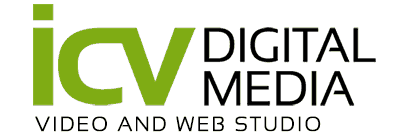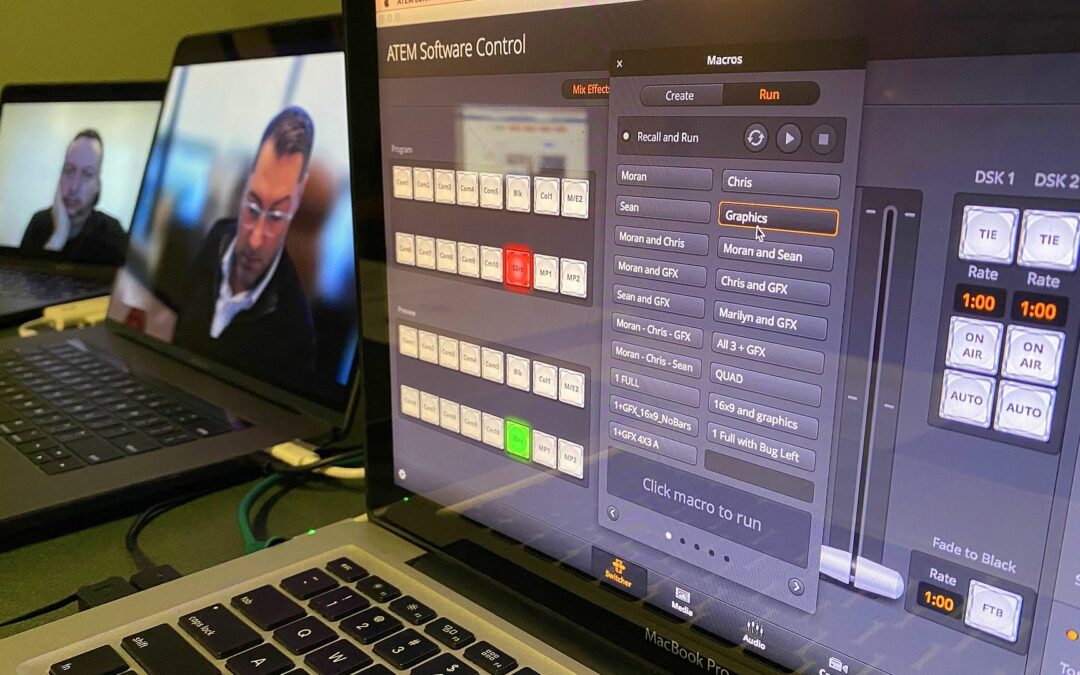Are You Using Zoom to its Full Potential for your Business?
In the fast-paced world of corporate communication, staying connected with your employees and stakeholders is paramount. The rise of remote work and the need for seamless virtual interactions have led to the increasing popularity of platforms like Zoom for hosting corporate town hall meetings and all-hands gatherings. In this comprehensive guide, we will explore how Zoom can be effectively utilized for corporate town halls, its benefits and disadvantages, interactive features, and why it has become the go-to choice for businesses of all sizes.
How to Do a Town Hall Meeting on Zoom
Conducting a town hall meeting on Zoom requires careful planning and execution.
Follow this step-by-step process below to help you get started:
- Schedule the Meeting: Use Zoom’s scheduling feature to set a date and time for your town hall meeting. Share the meeting details with your participants in advance.
- Prepare an Agenda: Outline the topics you want to cover during the town hall. A well-structured agenda ensures that the meeting stays on track.
- Designate a Host: Assign a moderator or host who will manage the meeting, introduce speakers, and handle technical aspects.
- Choose the Right Zoom Plan: Ensure that your Zoom plan accommodates the number of participants you expect. Large town halls may require a Zoom webinar license.
- Promote Engagement: Encourage participants to submit questions in advance or during the meeting using Zoom’s chat or Q&A features.
- Practice and Test: Conduct a dry run to test audio and video quality, screen sharing, and any interactive features you plan to use.
- Record the Meeting: Consider recording the town hall for those who can’t attend live or for future reference.
- Follow Up: After the meeting, share a recap, key takeaways, and any resources discussed.
What is the Best Use of Zoom for Corporate Meetings?
How do you know if you are getting the most out of Zoom for your business? A quick walk through all of the high level features may illuminate some of the aspects you aren’t currently using or could get value out of for your employee town hall meetings.
Zoom’s corporate use extends far beyond basic video conferencing. It serves as a versatile platform for:
- Internal Meetings: Zoom enables businesses to conduct team meetings, departmental updates, and project collaborations seamlessly.
- Client Meetings: It provides a secure and professional environment for client consultations, sales presentations, and product demos.
- Training and Workshops: Zoom’s interactive features make it ideal for hosting employee training, onboarding sessions, and workshops.
- Webinars and Town Halls: Zoom’s webinar capabilities allow organizations to reach a larger audience for marketing webinars, all-hands meetings, and corporate town halls.
- Remote Work: Zoom supports the growing trend of remote work by offering virtual backgrounds, screen sharing, and integration with other tools like Slack and Microsoft Teams.
- How Do You Make a Town Hall Meeting Interactive?
- Creating an interactive town hall meeting on Zoom enhances participant engagement and ensures a productive session. Here are some strategies:
- Q&A Sessions: Allocate time for participants to ask questions and receive live responses from speakers or panelists.
- Polls and Surveys: Use Zoom’s polling feature to gather instant feedback on topics discussed or to gauge the mood of the audience.
- Breakout Rooms: Divide participants into smaller groups for focused discussions on specific topics and then reconvene to share insights.
- Live Chat: Enable the chat feature to allow participants to interact with each other and with the host during the meeting.
- Interactive Presentations: Use screen sharing to present engaging visuals, videos, and slides that prompt discussion.
What are the Benefits of Virtual Town Halls?
Virtual town hall meetings offer many advantages, including:
Global Reach: Employees and stakeholders from many regions can participate in virtual town halls since they remove geographical restrictions.
Cost-Effectiveness: Doing virtual meetings can frequently be less expensive than holding in-person events due to cost savings on travel, lodging, and venue costs.
Flexibility: Anyone can participate from any location, fostering inclusion and allowing for remote or foreign team members.
Effective Communication: Through the use of virtual town halls, significant news, updates, and company updates may be efficiently shared with a large audience.
Increased Engagement: Interactive elements promote conversation and active engagement.
Benefits of Zoom as a Virtual Event Platform
Zoom stands out as a virtual event platform in the business and corporate sector. It is one of the most popular platforms with good reason and we’ve put together a list of the top reasons.
Zoom’s user-friendly design makes it easy for users to join and participate without facing any technical difficulties.
High-quality audio and video are provided by Zoom, ensuring dependable performance and effective communication.
Scalability: Zoom can handle events of all kinds, from intimate gatherings to sizable seminars and conferences.
Meetings and events can be videotaped for playback or later viewing, sharing, or archiving.
Zoom has enhanced its security features to shield meetings from unlawful entry and guarantee data privacy.
Disadvantages of Using Zoom for Corporate Meetings & Events
While Zoom offers numerous advantages for corporate meetings and events, it’s essential to be aware of its limitations and potential drawbacks. Understanding these disadvantages can help you make informed decisions and mitigate any challenges that may arise:
Zoom Fatigue: Extended use of Zoom can lead to “Zoom fatigue.” Participants may experience mental exhaustion and reduced engagement due to prolonged screen time. Encourage breaks and vary meeting formats to combat this issue.
Security Concerns: Zoom has faced security and privacy issues in the past. Instances of unauthorized access to meetings (often referred to as “Zoom bombing”) raised concerns about the platform’s security. While Zoom has implemented enhanced security measures, organizations must remain vigilant and follow best practices to protect their meetings.
Limited Interactivity in Large Meetings: While Zoom Meetings are suitable for interactive sessions with smaller groups, they may become less interactive in large meetings or webinars. Managing a large number of participants and addressing their questions or comments can be challenging.
Technical Requirements: Participants need a stable internet connection and compatible devices to join Zoom meetings. Technical issues such as poor connectivity, outdated hardware, or software compatibility problems can disrupt meetings.
Learning Curve: Some participants, especially those who are new to the platform, may require time to become familiar with Zoom’s features. This learning curve can slow down the onboarding process for new team members or attendees.
Meeting Recordings and Storage: While Zoom allows for meeting recordings, storage and management of these recordings can become an issue for organizations with limited cloud storage space. This may necessitate additional storage solutions or the need to regularly delete old recordings.
Costs for Large-Scale Events: Hosting large-scale webinars or events with Zoom Webinars may incur additional costs and become very expensive. Organizations should carefully consider their pricing plan based on their event size and frequency.
Accessibility Challenges: Ensuring accessibility for all participants, including those with disabilities, can be a challenge. While Zoom offers closed captioning and screen reader support, organizers need to proactively implement these features to ensure an inclusive experience.
Competition for Attention: In a virtual environment, participants may be easily distracted by other applications, emails, or notifications. Keeping attendees engaged and focused on the meeting’s content can be challenging.
Dependence on Third-Party Integrations: Some organizations may need to rely on third-party integrations to meet specific needs, such as integrating Zoom with customer relationship management (CRM) software or learning management systems (LMS). Managing these integrations can add complexity.
Lack of Physical Interaction: Zoom can’t replicate the physical interactions and dynamics that occur during in-person meetings. Non-verbal cues and spontaneous conversations may be limited in a virtual setting.
Changing Features & Settings: You may become accustomed to using certain features of the platform only to see them change over time due to continual updates of the Zoom software. This can add an additional level of complication to hosting a virtual meeting when the tools you have been using are suddenly gone from the service without warning.
To mitigate these disadvantages and ensure the success of your corporate meetings and events on Zoom, organizations should develop comprehensive meeting guidelines, invest in security measures, provide technical support, and continuously assess the effectiveness of their virtual communication strategies. Additionally, exploring complementary tools and platforms to address specific needs can enhance the overall virtual meeting experience.
What Types of Companies would want to Use Zoom for their Corporate Events?
A wide range of companies can benefit from using Zoom for their corporate events, including:
Enterprises: Large corporations use Zoom for internal meetings, client interactions, and webinars.
SMEs: Small and medium-sized enterprises leverage Zoom for client presentations and team collaborations.
Educational Institutions: Schools and universities utilize Zoom for online classes, webinars, and faculty meetings.
Healthcare Providers: Medical professionals conduct virtual patient consultations and medical webinars via Zoom.
Event Organizers: Zoom serves as a platform for hosting virtual conferences, seminars, and panel discussions.
What Types of Virtual Events are Best Run Using Zoom?
Zoom is well-suited for a wide variety of virtual events, here is a short list:
- Corporate Town Halls: Large-scale company updates, Q&A sessions, and employee engagement.
- Webinars: Educational and marketing webinars with audience engagement features.
- Training and Workshops: Employee training, skill development, and interactive workshops.
- Client Meetings: Sales presentations, consultations, and product demos.
- Panel Discussions: Expert panel discussions, industry roundtables, and thought leadership events.
Zoom Webinars Vs. Zoom Meetings, What’s the Difference?
Zoom Meetings and Zoom Webinars serve different purposes:
Zoom Meetings: Designed for interactive meetings and discussions among participants. They allow for screen sharing, breakout rooms, and active engagement.
Zoom Webinars: Tailored for larger audiences, often with one-way communication. Webinars include features like registration, reporting, and the ability to promote panelists or speakers.
In summary, Zoom Meetings are ideal for collaborative meetings, while Zoom Webinars are best suited for events with a primarily one-to-many communication format.
ICV Digital Media & the Power of Zoom for Corporate Town Halls
Zoom has revolutionized the way businesses conduct corporate town halls and all-hands meetings. Its versatility, interactivity, and user-friendly interface make it the go-to choice for modern corporate communication. ICV Digital Media, as a trusted authority in digital marketing and virtual events, stands ready to enhance your corporate meetings through seamless integration with Zoom. Experience the future of corporate communication with ICV Digital Media by visiting our website: https://icvdm.com.
Unlock the potential of Zoom, and transform your corporate town halls into engaging, informative, and interactive events that connect and inspire your teams, no matter where they are.


